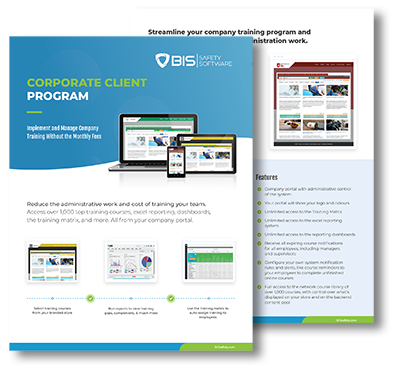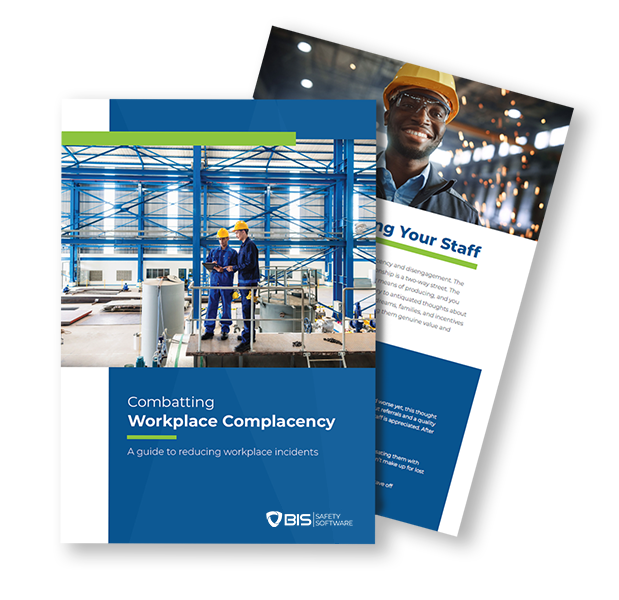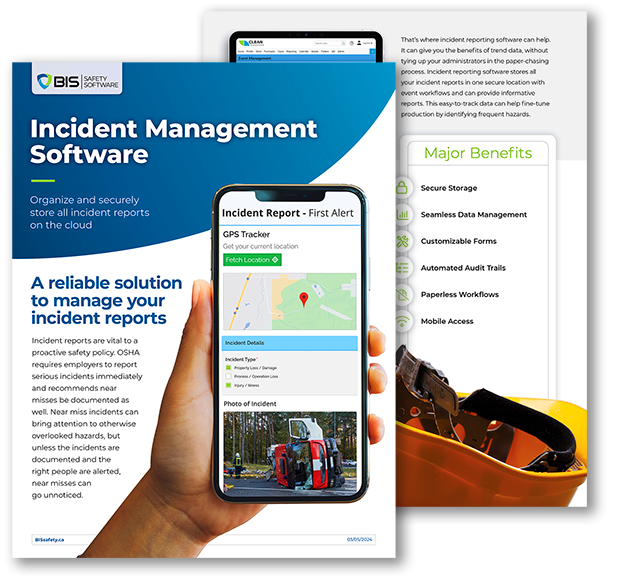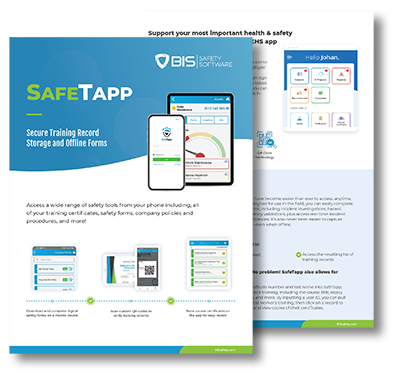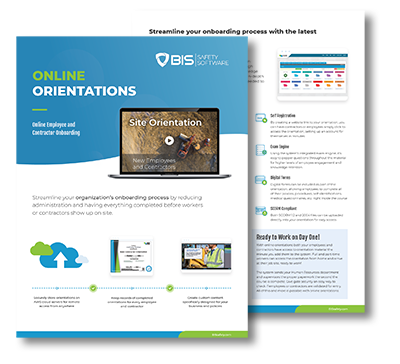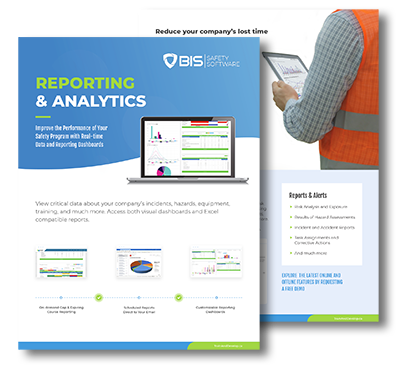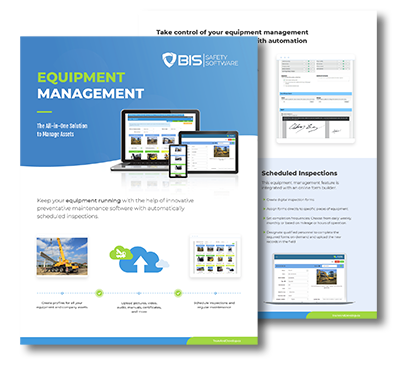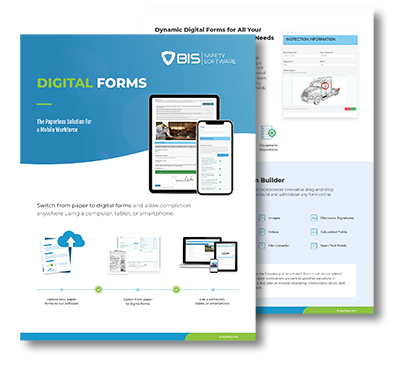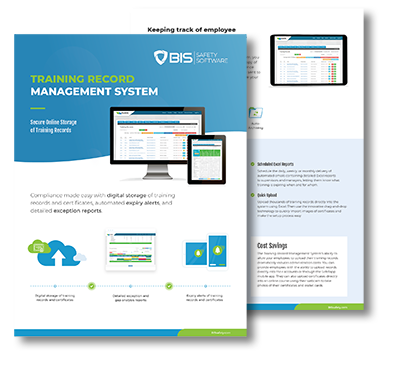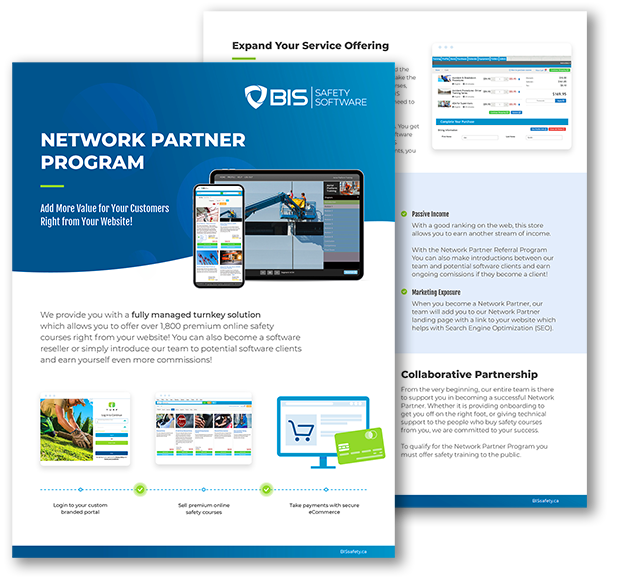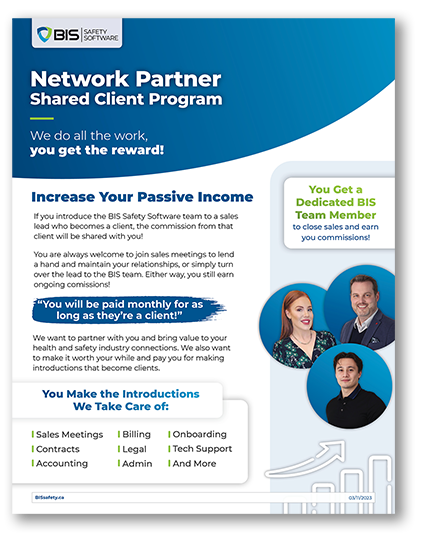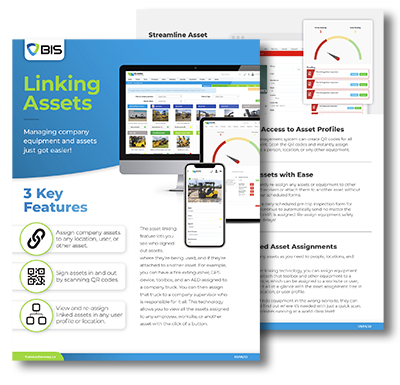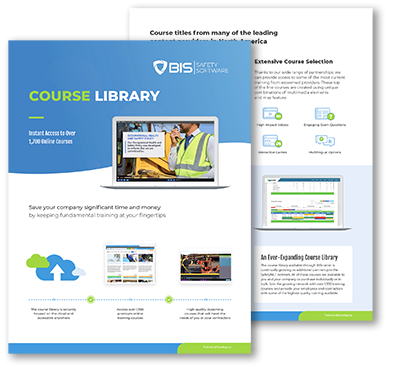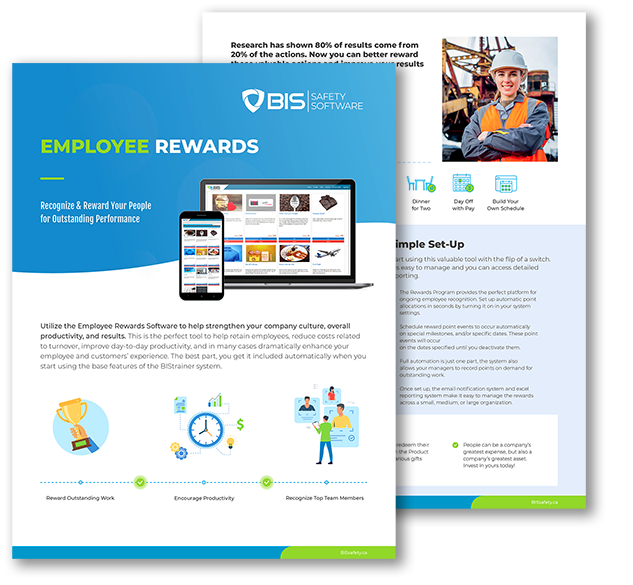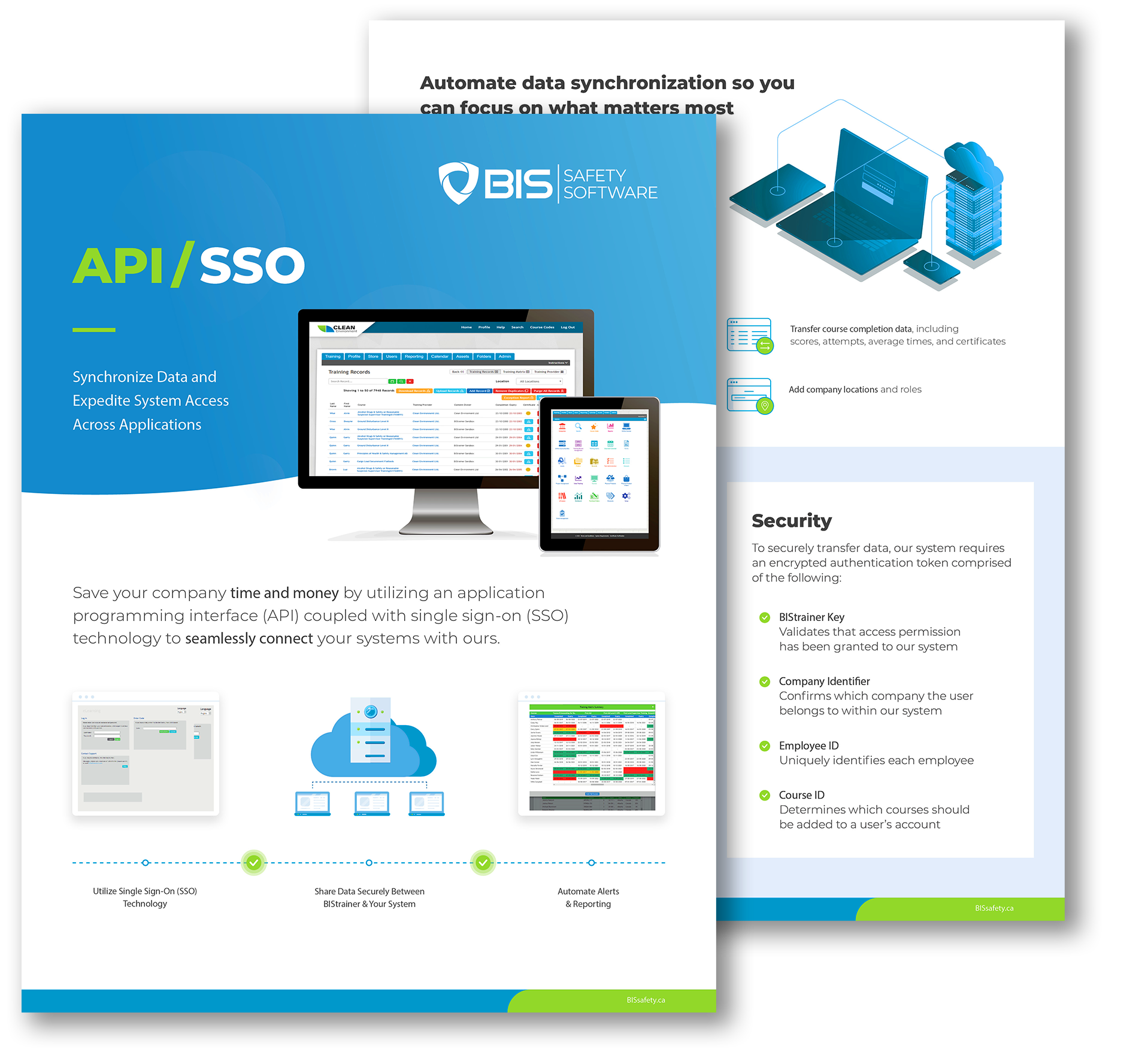Safety Myths
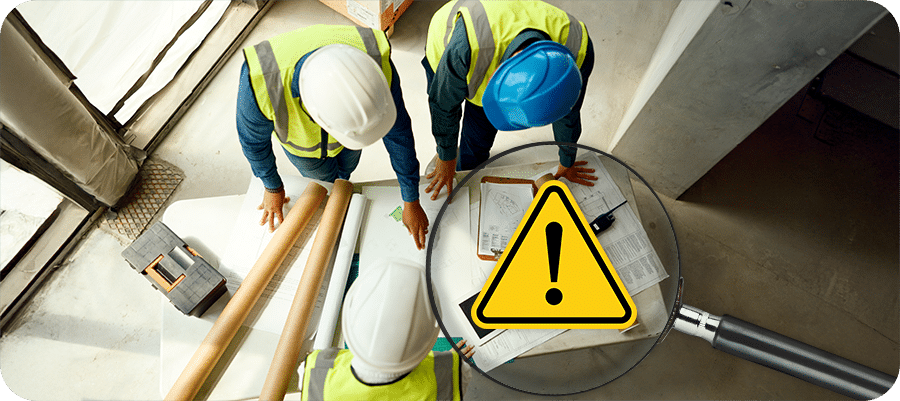
Home Safety Myths That Need to Die Lorem ipsum dolor sit amet, consectetur adipiscing elit. Ut elit tellus, luctus nec ullamcorper mattis, pulvinar dapibus leo. March 14, 2025 By Luke Hillenbrand Some workplace safety “truths” have been passed down for years—but that doesn’t make them right. In fact, some of the most common safety beliefs are flat-out dangerous. It’s time to call them out before they get someone hurt. Here are some of the biggest myths that need to be put to bed: 1. “We’ve Always Done It This Way, and It’s Been Fine” Why it’s dangerous: Just because it worked before doesn’t mean it’s safe now. The fix: Regularly review procedures and update them based on new technology and best practices. Just because something hasn’t caused an accident yet doesn’t mean it won’t. Luck is not a safety strategy. Every shortcut taken without consequence is just stacking the odds against you. The right way to do something is the safe way—not just the way it’s always been done. This myth is especially dangerous because it resists change. New technology, updated regulations, and evolving best practices exist for a reason. Sticking to outdated methods means ignoring safer, more efficient ways to work. It’s only a matter of time before that “tried and true” approach fails in a catastrophic way. ————————————————————————— “People with [differing] attitudes or inexperience think they can cut corners, but it will catch up with them eventually. It’s just like running stop signs—you might get away with it for a while, but sooner or later, disaster strikes.” Robin Postnikoff ————————————————————————— 2. “More PPE Means More Safety” Why it’s dangerous: Too much PPE can reduce mobility and create new hazards. The fix: Use the hierarchy of controls—eliminate hazards first, then rely on PPE as a last line of defense. PPE is essential, but it’s not a magic shield. Wearing thick gloves while handling tiny components can reduce grip and increase risk. Heavy gear in hot conditions can lead to heat exhaustion. Safety starts with eliminating hazards—not just piling on more protective equipment. The key is the hierarchy of controls. Remove the hazard first. Substitute safer alternatives. Install engineering or administrative controls before relying solely on PPE. Workers need the right protection, not just more protection. Key Takeaways Lorem Ipsum is simply dummy text of the printing and typesetting industry. Lorem Ipsum has been the industry’s standard dummy text ever since the 1500s, when an unknown printer took a galley of type and scrambled it to make a type specimen book. It has survived not only five centuries, but also Lorem Ipsum is simply dummy text of the printing and typesetting industry. Lorem Ipsum has been the industry’s standard dummy text ever since the 1500s, when an unknown printer took a galley of type and scrambled it to make a type specimen book. It has survived not only five centuries, but also Lorem Ipsum is simply dummy text of the printing and typesetting industry. Lorem Ipsum has been the industry’s standard dummy text ever since the 1500s, when an unknown printer took a galley of type and scrambled it to make a type specimen book. It has survived not only five centuries, but also Lorem Ipsum is simply dummy text of the printing and typesetting industry. Lorem Ipsum has been the industry’s standard dummy text ever since the 1500s, when an unknown printer took a galley of type and scrambled it to make a type specimen book. It has survived not only five centuries, but also ————————————————————————— “Sometimes, extreme PPE requirements actually cause more problems. We had sites where tying off at two steps was mandatory, but workers were tripping over their harness cords. It wasn’t reasonable, and people got hurt because of it.” Brett Burkard ————————————————————————— 3. “A Quick Task Doesn’t Need Full Safety Precautions” Why it’s dangerous: Accidents happen in seconds, especially when rushing. The fix: Treat every task—no matter how small—as an opportunity to follow proper safety procedures. The worst accidents happen when people skip safety steps “just for a second.” It only takes a moment for a fall, a fire, or an amputation to happen. No job is too small for safety. Related read: Do you own a business in the insurance industry? Check out how Artificial Intelligence is transforming the insurance industry. ————————————————————————— “Every rule has been written in blood. People don’t take things seriously until someone gets hurt or a company gets sued. That’s why we drill safety into training—it has to stick before something bad happens.” Robin Postnikoff ————————————————————————— 4. “If It’s Not an Injury, It’s Not a Big Deal” Why it’s dangerous: Near misses are warnings that something is wrong. The fix: Investigate and correct all near misses before they turn into serious accidents. Near misses are flashing warning signs. Ignoring them guarantees that next time, someone will get hurt. Treat close calls like actual incidents—investigate, correct, and learn from them. In industries like construction and manufacturing, near misses are often precursors to severe accidents. A worker who trips but doesn’t fall today might break a leg tomorrow. A machine that jams without consequence today might lead to an amputation next week. Reporting and addressing near misses prevent tragedies. 5. “Good Workers Don’t Need Safety Training” Why it’s dangerous: Experience can lead to overconfidence and complacency. The fix: Make regular safety training mandatory for all employees, no matter their experience level. Experience doesn’t make anyone invincible. In fact, veteran workers are often the ones who get complacent. Training isn’t just for rookies—it’s for everyone, all the time. ————————————————————————— “I don’t care if you have a master’s degree in safety. If you don’t have the experience, the network, and the mindset to keep learning, you’re not going to be a good safety person. Training is never just a ‘one and done.” Kevin Swinden ————————————————————————— 6. “Slower Work Is Safer Work” Why it’s dangerous: Moving too slowly can cause inefficiencies and increase risk. The fix: Focus on smart work—trained, controlled, and precise—rather than
Would You Bet Your Paycheck on Safety?

Home Would You Bet Your Paycheck on Safety? That Need to Die Lorem ipsum dolor sit amet, consectetur adipiscing elit. Ut elit tellus, luctus nec ullamcorper mattis, pulvinar dapibus leo. March 14, 2025 By Luke Hillenbrand Imagine this: At the end of every shift, you had to bet your entire paycheck that nobody on your crew got hurt. Would you do anything differently? Would you double-check your PPE? Would you remind a co-worker to use a harness? Would you take that extra second to secure a load or test a machine lockout? The truth is, whether you realize it or not, you are betting on safety every day. The stakes aren’t just money—they’re your health, your reputation, and your future. One bad decision, one shortcut, one ignored hazard, and you could lose everything. Safety is More Than a Rule—It’s a Wager Most people wouldn’t gamble their paycheck on pure luck. But every time someone skips a step, assumes a risk, or rushes a job, they’re rolling the dice. Sometimes they win—nothing happens. Other times? That bet costs them weeks of lost wages, medical bills, or a permanent injury. Think about it: A mechanic skips wearing gloves because “it’s just a quick fix.” That quick fix leads to stitches and time off work. A forklift operator speeds up to finish early. One wrong turn leads to a collision—and unemployment. A roofer skips fall protection “just for a second.” That second changes their life forever. Key Takeaways Lorem Ipsum is simply dummy text of the printing and typesetting industry. Lorem Ipsum has been the industry’s standard dummy text ever since the 1500s, when an unknown printer took a galley of type and scrambled it to make a type specimen book. It has survived not only five centuries, but also Lorem Ipsum is simply dummy text of the printing and typesetting industry. Lorem Ipsum has been the industry’s standard dummy text ever since the 1500s, when an unknown printer took a galley of type and scrambled it to make a type specimen book. It has survived not only five centuries, but also Lorem Ipsum is simply dummy text of the printing and typesetting industry. Lorem Ipsum has been the industry’s standard dummy text ever since the 1500s, when an unknown printer took a galley of type and scrambled it to make a type specimen book. It has survived not only five centuries, but also Lorem Ipsum is simply dummy text of the printing and typesetting industry. Lorem Ipsum has been the industry’s standard dummy text ever since the 1500s, when an unknown printer took a galley of type and scrambled it to make a type specimen book. It has survived not only five centuries, but also The House Always Wins Casinos are designed so that, over time, the house always wins. Unsafe work habits work the same way. Maybe you’ve skipped safety steps before and nothing happened. Maybe you’ve seen others take risks and walk away fine. That’s like winning a few hands in a row—it feels good, but the odds will catch up eventually. Complacency is the biggest con of all. The more times a worker gets away with a risk, the more confident they become in their luck. But luck runs out. And when it does, the price is steep. Related read: Do you own a business in the insurance industry? Check out how Artificial Intelligence is transforming the insurance industry. How to Play It Safe (and Win Every Time) 1. Be Smart Act like your paycheck depends on it. Because in many ways, it does. 2. Think Long-Term A shortcut might save five minutes, but an injury could cost five months. 3. Hold Each Other Accountable Safety isn’t a solo game. Watch out for your crew. Remind them that a mistake could cost them more than just pride. 4. Stay Sharp Keep safety top of mind. Refresh your training. Don’t let routine make you careless. 5. Call Out the Risks If something feels unsafe, stop. Speak up. Fix it before it becomes an accident. Make the Right Bet If you had to bet your paycheck on safety, you’d work smarter. You’d pay attention. You’d make sure nobody around you was cutting corners. You’d take safety seriously—because you’d have too much to lose. The reality? You already do. Every shift, every task, every decision is a bet. Make sure it’s one you can afford to win. Stay sharp. Stay safe. Because in this game, there’s no cashing out. BIS Social Media Follow BIS Safety Software for industry-leading safety updates, training solutions, and more. Hover over each icon for quick access to follow, share, or explore our other channels. Frequently Asked Questions Have question in mind? We are here to answer. If you don’t see your question here, drop us a line at our contact page. Lorem Ipsum is simply dummy text of the printing and typesetting industry? Lorem ipsum dolor sit amet, consectetur adipiscing elit. Ut elit tellus, luctus nec ullamcorper mattis, pulvinar dapibus leo. Lorem Ipsum is simply dummy text of the printing and typesetting industry? Lorem ipsum dolor sit amet, consectetur adipiscing elit. Ut elit tellus, luctus nec ullamcorper mattis, pulvinar dapibus leo. Lorem Ipsum is simply dummy text of the printing and typesetting industry? Lorem ipsum dolor sit amet, consectetur adipiscing elit. Ut elit tellus, luctus nec ullamcorper mattis, pulvinar dapibus leo. Lorem Ipsum is simply dummy text of the printing and typesetting industry? Lorem ipsum dolor sit amet, consectetur adipiscing elit. Ut elit tellus, luctus nec ullamcorper mattis, pulvinar dapibus leo. Lorem Ipsum is simply dummy text of the printing and typesetting industry? Lorem ipsum dolor sit amet, consectetur adipiscing elit. Ut elit tellus, luctus nec ullamcorper mattis, pulvinar dapibus leo. Lorem ipsum dolor sit amet, consectetur adipiscing elit. Ut elit tellus, luctus nec ullamcorper mattis, pulvinar dapibus leo. Lorem ipsum dolor sit amet, consectetur adipiscing elit. Ut elit tellus, luctus nec ullamcorper mattis, pulvinar dapibus leo. Lorem ipsum dolor sit amet, consectetur adipiscing elit. Ut
Top 10 Red Flags in Safety Audits

Home Top 10 Red Flags in Safety Audits How to Avoid Them Lorem ipsum dolor sit amet, consectetur adipiscing elit. Ut elit tellus, luctus nec ullamcorper mattis, pulvinar dapibus leo. March 13, 2025 By Dinesh Kumar Safety audits are essential for ensuring workplace compliance and protecting employees. They bring to light the weak points in a safety program and provide actionable insights for improvement. However, common issues can derail audits, leading to penalties, operational disruptions, or worse—preventable incidents. Avoiding these pitfalls doesn’t require perfection. It requires preparation, follow-through, and attention to detail. Here are ten common red flags auditors encounter and practical ways to address them. 1. Disorganized or Missing Documentation The Issue: Incident reports, inspection logs, or training records are incomplete, outdated, or hard to locate. Why It Matters: Documentation is the backbone of safety compliance. Gaps in records raise questions about whether processes are being followed consistently. How to Address It: Store all safety-related documents in a centralized system, whether digital or physical. Automate reminders for updates to keep records current and ensure they’re easily accessible during an audit. 2. Training Records That Don’t Measure Up The Issue: Employees have incomplete or outdated safety training records, including missed refresher courses. Why It Matters: Training equips workers with the knowledge to manage risks effectively. Inadequate records suggest that critical skills and safety protocols may not be properly reinforced. How to Address It: Use a Learning Management System (LMS) to track training participation and completion. Schedule refresher courses at regular intervals and focus on high-risk roles to ensure readiness across the workforce. Key Takeaways Lorem Ipsum is simply dummy text of the printing and typesetting industry. Lorem Ipsum has been the industry’s standard dummy text ever since the 1500s, when an unknown printer took a galley of type and scrambled it to make a type specimen book. It has survived not only five centuries, but also Lorem Ipsum is simply dummy text of the printing and typesetting industry. Lorem Ipsum has been the industry’s standard dummy text ever since the 1500s, when an unknown printer took a galley of type and scrambled it to make a type specimen book. It has survived not only five centuries, but also Lorem Ipsum is simply dummy text of the printing and typesetting industry. Lorem Ipsum has been the industry’s standard dummy text ever since the 1500s, when an unknown printer took a galley of type and scrambled it to make a type specimen book. It has survived not only five centuries, but also Lorem Ipsum is simply dummy text of the printing and typesetting industry. Lorem Ipsum has been the industry’s standard dummy text ever since the 1500s, when an unknown printer took a galley of type and scrambled it to make a type specimen book. It has survived not only five centuries, but also 3. Incomplete Equipment Maintenance Logs The Issue: Maintenance records for machinery or equipment are inconsistent or nonexistent. Why It Matters: Poorly maintained equipment increases the likelihood of accidents and signals a lack of proactive risk management. How to Address It: Implement a maintenance tracking system to log inspections and repairs. Set up automated reminders for routine checks to prevent lapses and ensure that every piece of equipment is safe to operate. 4. Lack of Reporting for Near-Misses The Issue: Near-miss incidents are rarely reported or poorly documented. Why It Matters: Near-misses provide a critical opportunity to address hazards before they escalate into injuries. A lack of reporting indicates potential blind spotsin risk identification. How to Address It: Create a non-punitive reporting system that makes it easy for employees to flag near-misses. Mobile tools or simple forms can streamline the process and encourage participation. 5. PPE Non-Compliance The Issue: Employees are either not wearing or improperly using personal protective equipment (PPE). Why It Matters: Consistent PPE usage is fundamental to workplace safety. Visible lapses undermine compliance efforts and put workers at unnecessary risk. How to Address It: Conduct regular safety observations to verify PPE use and reinforce training on proper practices. Signage in high-risk areas can also serve as a visual reminder. 6. Emergency Plans That Are Outdated or Unpracticed The Issue: Emergency response plans are outdated, incomplete, or haven’t been tested with drills. Why It Matters: An unclear or untested plan can lead to confusion during emergencies, putting workers and operations at greater risk. How to Address It: Review and update emergency plans annually. Conduct drills to test preparedness and ensure employees understand their roles and responsibilities during a crisis. 7. Hazards That Keep Reappearing The Issue: Recurring issues identified in previous audits remain unresolved. Why It Matters: Repeated hazards suggest a lack of accountability and undermine trust in the safety program. How to Address It: Treat audit findings as action items with clear deadlines and responsibilities. Regularly track progress to ensure corrective actions are completed and prevent recurring issues. Related read: Do you own a business in the insurance industry? Check out how Artificial Intelligence is transforming the insurance industry. 8. Disengaged Leadership The Issue: Managers and leadership are absent from safety initiatives or minimally involved in audits. Why It Matters: Leadership involvement is critical for reinforcing a culture of safety. A lack of engagement sends a message that safety isn’t a priority. How to Address It: Involve leaders in safety meetings, audits, and training sessions. Make safety metrics a regular part of leadership reviews to keep it on the agenda and emphasize its importance. 9. Poor Communication of Safety Updates The Issue: Safety updates, protocols, or audit findings aren’t consistently shared with employees. Why It Matters: Gaps in communication lead to confusion, reduced compliance, and repeated issues that could have been avoided with better transparency. How to Address It: Develop a clear communication strategy for all safety updates. Use multiple channels like email, team meetings, and digital dashboards to ensure every employee stays informed. Safety software can track acknowledgment to verify employees receive critical information. 10. Neglected Audit Follow-Ups The Issue: Recommendations from previous audits
The Safety Metrics That Matter

Home The Safety Metrics That Matter How to Track and Improve Workplace Safety Lorem ipsum dolor sit amet, consectetur adipiscing elit. Ut elit tellus, luctus nec ullamcorper mattis, pulvinar dapibus leo. March 4, 2025 By Shilpa Sharma Safety in the workplace isn’t just a box to check—it’s a strategy that impacts productivity, morale, and compliance. But how do you know if your safety efforts are truly working? Tracking the right metrics provides the clarity needed to assess your current programs, identify risks, and drive continuous improvement. Metrics are more than numbers—they’re a window into your organization’s strengths and weaknesses. The right data shows what’s working, where gaps exist, and how to make real progress. This guide explores the key safety metrics every organization should track, why they matter, and how they can build a stronger, safer culture. Why Metrics Are Essential for Safety Management It’s easy to assume that safety efforts are effective simply because there hasn’t been a recent incident. But this reactive mindset leaves organizations vulnerable. Metrics allow you to move beyond assumptions and take a proactive approach. Here’s why tracking safety metrics is critical: Identify Trends: Metrics uncover patterns in incidents, near-misses, and compliance gaps, providing actionable insights. Set Priorities: Clear data highlights where to focus your efforts,whether it’s a particular department, process, or hazard. Measure Success: Safety initiatives need measurable goals. Metrics show whether you’re meeting them or need to adjust. Improve Accountability: Transparent data ensures everyone, from frontline workers to executives, understands their role in improving safety. Safety metrics turn vague objectives like “reduce accidents” into specific, trackable actions. They’re the foundation of a safety program that delivers real results. Key Takeaways Lorem Ipsum is simply dummy text of the printing and typesetting industry. Lorem Ipsum has been the industry’s standard dummy text ever since the 1500s, when an unknown printer took a galley of type and scrambled it to make a type specimen book. It has survived not only five centuries, but also Lorem Ipsum is simply dummy text of the printing and typesetting industry. Lorem Ipsum has been the industry’s standard dummy text ever since the 1500s, when an unknown printer took a galley of type and scrambled it to make a type specimen book. It has survived not only five centuries, but also Lorem Ipsum is simply dummy text of the printing and typesetting industry. Lorem Ipsum has been the industry’s standard dummy text ever since the 1500s, when an unknown printer took a galley of type and scrambled it to make a type specimen book. It has survived not only five centuries, but also Lorem Ipsum is simply dummy text of the printing and typesetting industry. Lorem Ipsum has been the industry’s standard dummy text ever since the 1500s, when an unknown printer took a galley of type and scrambled it to make a type specimen book. It has survived not only five centuries, but also The Safety Metrics That Matter Most Tracking safety data can feel overwhelming, especially with so many variables at play. To make the process manageable, focus on these key metrics that provide the most insight into your workplace safety efforts: 1. Incident Rates: The Safety Baseline What It Measures: The number of workplace injuries or illnesses over a specific period, often calculated per 100 full-time employees. Why It Matters: Incident rates are a critical measure of workplacesafety. A high rate signals systemic issues, while a declining rateindicates progress. How to Track: Calculate Total Recordable Incident Rate (TRIR) andcompare it against industry benchmarks. Break the data down further bydepartment or job role to identify problem areas. Example in Action: A manufacturing company notices its TRIR is higher than the industry average. By analyzing incident reports, they discover most injuries occur during equipment maintenance. This insight leads to additional training and updated safety protocols, reducing incidents over time. 2. Near-Miss Reports: Catching Problems Early What It Measures: Situations where an accident was narrowly avoided, such as a worker tripping over an unsecured cable but notfalling. Why It Matters: Near-misses provide critical warnings about potential hazards. They’re opportunities to fix problems before theycause harm. How to Track: Implement an easy-to-use reporting system and actively encourage workers to log near-misses. Track trends to pinpointrecurring risks. Example in Action: A manufacturing company notices its TRIR is higher than the industry average. By analyzing incident reports, they discover most injuries occur during equipment maintenance. This insight leads to additional training and updated safety protocols, reducing incidents over time. 3. Compliance Scores: Staying Ahead of Regulations What It Measures: How well your organization meets regulatory safety standards and internal policies Why It Matters: Falling out of compliance can lead to hefty fines, reputational damage, and operational delays. High compliance scoresindicate your processes are robust and up-to-date. How to Track: Conduct regular audits, inspections, and reviews of safety documentation. Use safety management software to streamlinecompliance tracking. Example in Action: During a routine audit, a logistics company identifies gaps in their chemical storage compliance. By updating training and implementing automated alerts for inspections, they prevent violations and maintain their safety record. 4. Training Participation and Completion: Building a Prepared Workforce What It Measures: The percentage of employees who have completed required safety training, as well as refresher courses. Why It Matters: Training ensures workers have the knowledge and skills to handle risks effectively. Low participation rates can indicategaps in your safety program. How to Track: Monitor training attendance and completion rates using a learning management system (LMS). Analyze data by team ordepartment to identify weak spots. Example in Action: : A healthcare provider notices low completion rates for fire safety training among night-shift staff. They adjust training schedules to accommodate night workers, increasing compliance and preparedness. Related read: Do you own a business in the insurance industry? Check out how Artificial Intelligence is transforming the insurance industry. 5. Safety Observations: Proactive Risk Management What It Measures: Observations conducted by managers or safety teams to evaluate workplace conditions and behaviors. Why It Matters: : Regular
The Seven Deadly Sins

Home The Seven Deadly Sins That Destroy Safety Culture Lorem ipsum dolor sit amet, consectetur adipiscing elit. Ut elit tellus, luctus nec ullamcorper mattis, pulvinar dapibus leo. February 28, 2025 By Divyanshu Jain Even the strongest safety cultures can be dismantled by a few key missteps. These are the seven deadly sins that can erode safety standards, diminish trust, and put lives at risk. Understanding them is the first step in preventing their destructive impact. 1. Double Standards: One Rule for Some, Another for Others One of the fastest ways to destroy a safety culture is to enforce rules inconsistently. If leadership disregards safety policies while expecting employees to follow them, resentment and noncompliance will spread. Occupational Health and Safety Officer Ted Lane recalls, “I’ve seen situations where the sign on the shop door says ‘Safety glasses must be worn,’ but the boss walks in without them. If leadership doesn’t follow the rules, don’t expect anyone else to.” 2. Top-Down Directives Without Worker Input Safety policies that are dictated from the top down—without input from frontline workers—often fail. Employees who aren’t consulted see policies as bureaucratic red tape rather than measures designed to protect them. Sharon Cole, an OHS Consultant, advises, “If you’re writing a safety policy, involve the workers it will affect. They’re the ones on the frontlines, and their input makes policies practical and enforceable.” 3. Tolerating Negative Attitudes Toward Safety A single bad attitude can spread like wildfire. Workers who scoff at safety meetings, dismiss concerns, or ignore protocols undermine the organization’s culture. If their behavior is left unchecked, it signals that safety isn’t truly a priority. Ted Lane emphasizes, “Zero tolerance for bad safety performance is crucial. Whether it’s the boss’s son or your most experienced worker, if they refuse to comply with safety rules, they need to go.” Key Takeaways Lorem Ipsum is simply dummy text of the printing and typesetting industry. Lorem Ipsum has been the industry’s standard dummy text ever since the 1500s, when an unknown printer took a galley of type and scrambled it to make a type specimen book. It has survived not only five centuries, but also Lorem Ipsum is simply dummy text of the printing and typesetting industry. Lorem Ipsum has been the industry’s standard dummy text ever since the 1500s, when an unknown printer took a galley of type and scrambled it to make a type specimen book. It has survived not only five centuries, but also Lorem Ipsum is simply dummy text of the printing and typesetting industry. Lorem Ipsum has been the industry’s standard dummy text ever since the 1500s, when an unknown printer took a galley of type and scrambled it to make a type specimen book. It has survived not only five centuries, but also Lorem Ipsum is simply dummy text of the printing and typesetting industry. Lorem Ipsum has been the industry’s standard dummy text ever since the 1500s, when an unknown printer took a galley of type and scrambled it to make a type specimen book. It has survived not only five centuries, but also 4. Shifting Priorities: Safety Takes a Back Seat Many companies claim safety is their top priority—until deadlines or costs are at stake. When safety is sacrificed for productivity, employees receive a clear message: safety only matters when it’s convenient. This erodes trust and encourages unsafe behaviors. 5. Failing to Lead by Example When supervisors and executives fail to embody the safety standards they expect from employees, it weakens the entire culture. A strong safety culture starts at the top and trickles down. Patrick Cantner, HSE Director of Willbros Canada, warns, “If you say, ‘Production done in the absence of safety will not be valued or rewarded,’ but then allow it to happen, you’ll destroy your safety culture.” 6. Punishing Workers for Reporting Issues If employees who report unsafe conditions or incidents are reprimanded instead of supported, they will stop coming forward. A culture of fear leads to underreporting, which increases risk. Marcia Minto, an OH&S Program Manager, states, “If someone reports an issue and is yelled at by management, they won’t come forward next time. Employees need to feel empowered, not afraid.” 7. Complacency: The Silent Killer Organizations that have gone a long time without an incident often become overconfident. Safety policies become lax, assumptions replace vigilance, and standards begin to slip. Over time, this complacency spreads, erasing years of hard work in building a safety culture. The moment an organization assumes it has ‘solved’ safety, it has already taken a step backward. Related read: Do you own a business in the insurance industry? Check out how Artificial Intelligence is transforming the insurance industry. Preventing the Seven Deadly Sins To maintain a strong safety culture, organizations must actively identify and counter these pitfalls. Leaders must lead by example, workers must feel empowered to participate, and safety must be a genuine, unwavering priority. The key takeaway? Building a safety culture is difficult, but destroying one is easy. Organizations must remain vigilant to ensure safety is not just a policy, but a deeply ingrained part of workplace operations. BIS Social Media Follow BIS Safety Software for industry-leading safety updates, training solutions, and more. Hover over each icon for quick access to follow, share, or explore our other channels. Frequently Asked Questions Have question in mind? We are here to answer. If you don’t see your question here, drop us a line at our contact page. Lorem Ipsum is simply dummy text of the printing and typesetting industry? Lorem ipsum dolor sit amet, consectetur adipiscing elit. Ut elit tellus, luctus nec ullamcorper mattis, pulvinar dapibus leo. Lorem Ipsum is simply dummy text of the printing and typesetting industry? Lorem ipsum dolor sit amet, consectetur adipiscing elit. Ut elit tellus, luctus nec ullamcorper mattis, pulvinar dapibus leo. Lorem Ipsum is simply dummy text of the printing and typesetting industry? Lorem ipsum dolor sit amet, consectetur adipiscing elit. Ut elit tellus, luctus nec ullamcorper mattis, pulvinar dapibus leo. Lorem Ipsum is
Building a Strong Safety Culture

Home Building a Strong Safety Culture 10 Practical Strategies Lorem ipsum dolor sit amet, consectetur adipiscing elit. Ut elit tellus, luctus nec ullamcorper mattis, pulvinar dapibus leo. February 28, 2025 By Divyanshu Jain Creating a strong safety culture takes effort, but the rewards—fewer injuries, lower costs, and a more engaged workforce—are well worth it. Organizations that successfully build a culture of safety don’t just reduce accidents; they improve morale, efficiency, and even profitability. Here are ten essential strategies to strengthen workplace safety: 1. Be Willing to Make Sacrifices Transforming a weak safety culture into a strong one isn’t always easy. It requires hard decisions and, in some cases, a willingness to part ways with employees who refuse to comply. Ted Lane, an Occupational Health and Safety Officer, recalls a major Alberta construction company that implemented a zero-tolerance safety policy. Initially, they lost workers who resisted the new approach, but within a few years, they rebuilt with employees who valued safety. The result? A safer, more efficient, and ultimately more profitable company. 2. Engage Employees in Safety Decisions Many safety policies fail because they are imposed without input from the employees they affect. Workers on the frontlines know the risks better than anyone else, so including them in safety discussions leads to more practical, effective solutions. “We promote the guys to do some of the things in their own way,” says Darryl Chipman, Director for CASCA. “Recently, a worker suggested using pictures instead of a long written form for safety reports. It made things easier, faster, and more effective.” 3. Encourage Candor and Open Communication Employees need to feel safe speaking up about unsafe conditions or behaviors. In organizations with strong safety cultures, workers are encouraged—not punished— for raising concerns. Ted Lane has a unique way of testing this: “I’ll walk into a site missing a piece of safety gear. If a worker stops me and says, ‘Hey, get that fixed,’ I know that company’s culture is working.” Key Takeaways Lorem Ipsum is simply dummy text of the printing and typesetting industry. Lorem Ipsum has been the industry’s standard dummy text ever since the 1500s, when an unknown printer took a galley of type and scrambled it to make a type specimen book. It has survived not only five centuries, but also Lorem Ipsum is simply dummy text of the printing and typesetting industry. Lorem Ipsum has been the industry’s standard dummy text ever since the 1500s, when an unknown printer took a galley of type and scrambled it to make a type specimen book. It has survived not only five centuries, but also Lorem Ipsum is simply dummy text of the printing and typesetting industry. Lorem Ipsum has been the industry’s standard dummy text ever since the 1500s, when an unknown printer took a galley of type and scrambled it to make a type specimen book. It has survived not only five centuries, but also Lorem Ipsum is simply dummy text of the printing and typesetting industry. Lorem Ipsum has been the industry’s standard dummy text ever since the 1500s, when an unknown printer took a galley of type and scrambled it to make a type specimen book. It has survived not only five centuries, but also 4. Lead by Example Leadership must consistently demonstrate their commitment to safety. When managers follow safety protocols, employees are far more likely to do the same. Patrick Cantner, HSE Director of Willbros Canada, advises, “If you say safety comes first, but then reward employees who cut corners to meet deadlines, your safety culture will collapse.” 5. Promote Transparency An open approach to safety builds trust and accountability. Some companies publicly share their safety records and improvement efforts to reinforce the importance of workplace safety. Kinder Morgan sets a high standard by posting safety reports—including injury rates and incidents—on its public website. This level of transparency keeps employees and leadership accountable. 6. Empower Employees to Act Workers must feel confident in stopping unsafe work without fear of retaliation. When employees know they have the authority to halt operations for safety concerns, they become active participants in maintaining a secure workplace. “Our control center operators don’t need approval to shut down a pipeline if they feel there’s an unsafe condition,” says Dan Carter, Director of the Central Region & Control Centre for Kinder Morgan. “That’s built into our procedures.” 7. Make Safety Personal People are more likely to follow safety procedures if they understand the personal impact. Sharon Cole, OHS Consultant for Alberta Gaming and Liquor Corporation, changed a skeptical worker’s attitude by asking him to imagine how he’d feel if his best friend got hurt on the job because he didn’t speak up. That moment of personal connection turned him into one of the most safety-conscious employees on the site. Related read: Do you own a business in the insurance industry? Check out how Artificial Intelligence is transforming the insurance industry. 8. Keep Safety Communication Frequent Safety isn’t a one-time conversation—it’s an ongoing discussion. Monthly safety updates, toolbox talks, and bulletin boards help reinforce key messages. Adam Czarnecki, Human Resource Manager for Great West Kenworth, recommends using statistics to keep employees engaged: “Send out reports on injury trends. Show workers the progress being made.” 9. Recognize and Reward Safe Behavior Positive reinforcement plays a critical role in fostering safety. However, rewards should focus on long-term commitment rather than quick incentives that might encourage underreporting of incidents. Chipman explains, “We offer training and career advancement to employees who prioritize safety. When new safety positions open, we promote from within.” 10. Start With Yourself Safety culture begins with individuals taking personal responsibility. It’s easy to point fingers at management or coworkers, but real change starts when every employee commits to prioritizing safety in their own work. The Real Bottom Line When safety is embedded in an organization’s culture, it doesn’t just prevent accidents—it improves efficiency, morale, and trust. Strong safety cultures don’t develop overnight, but with commitment, consistency, and leadership, they become an essential part


